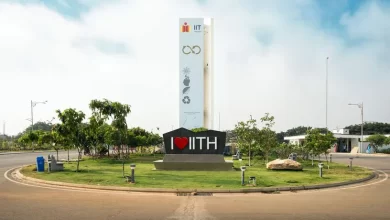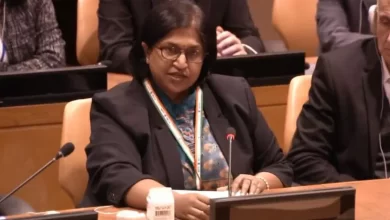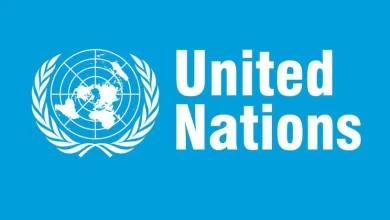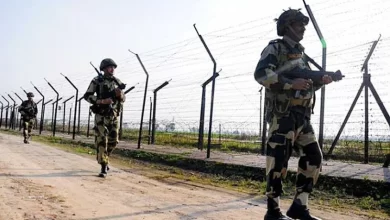How Chiang Mai became the world’s most polluted city
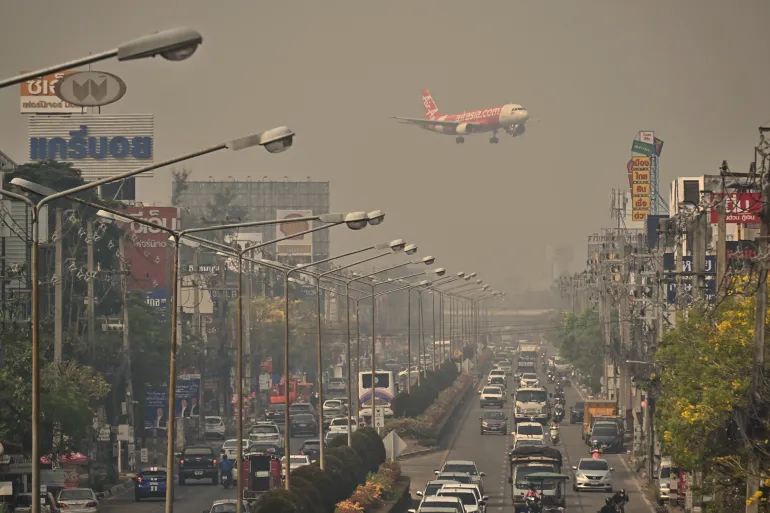
Burning fields are blamed for hazardous levels of air pollution in northern Thailand but the government is doing little to act.
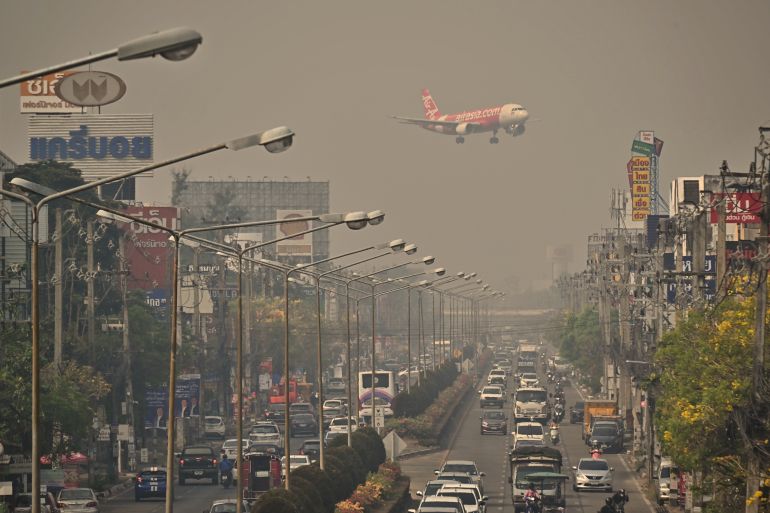
Weenarin Lulitanonda is passionate about clean air.
“The air people are breathing in northern Thailand is cutting their life short by three, four years. It causes cancers, mental health issues, other problems. And almost no one is taking up the cause, there is so much passivity,”
Weenarin is the co-founder of Thailand Clean Air Network, an NGO, and a former World Bank economist.
She is trying to rally the Thai public and force the government to address what has become one of the region’s most acute environmental disasters. Every year between February and April – now simply referred to as the “haze season” – northern Thailand battles hazardous levels of smog.
Chiang Mai, the region’s cultural and tourist hub and home to about 128,000 people, on Tuesday ranked as the world’s most polluted city ahead of hotspots such as Lahore, Tehran and Beijing.
On April 6, the worst day this year, the reading hit 223, according to the Swiss air quality firm IQAir, nearly 15 times more than the daily limit advised by the World Health Organization (WHO). PM2.5 is fine particulate matter within the smog that is 2.5 microns or less in diameter and can penetrate deep into the lungs and have been linked to health problems such as acute and chronic bronchitis, as well as asthma attacks,
It does not take elaborate equipment to see the problem. Toxic haze limits visibility to a few hundred metres; the blanket of smog looks like a poisonous fog from the aeroplane. The air smells of a bonfire.
Thousands of people suffer from respiratory issues – just one Chiang Mai hospital reported nearly 13,000 patients seeking treatment for breathing problems in the first quarter of 2023, according to local media outlet Prachatai.
No longer able to ignore the problem, the authorities are focusing on the symptoms. They spray water into the air in city centres and seed clouds from military aircraft, hoping for rains to wash out the pollution, to predictably lacklustre effect.
A running joke in Chiang Mai is that the policy seems to be “Let’s wait for Songkran” – the Thai Lunar New Year that this year falls on Wednesday – as it broadly coincides with the start of the rainy season.
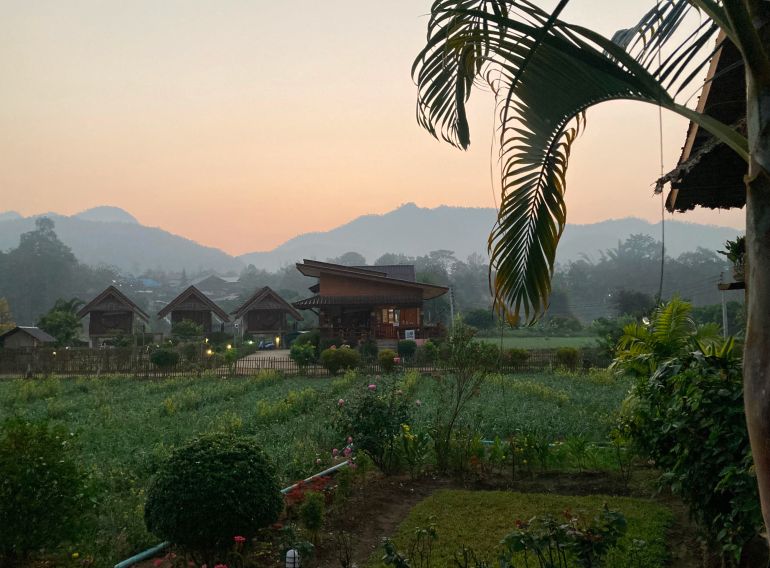
Experts say that to tackle the real source of the problem, the government would have to confront one of its important political backers.
“The problem is very much tied to the big agricultural industry, which the government is not even trying to touch,” Weenarin said.
“Tycoon families on top of the economy” – including those running agribusiness conglomerates – “are very close to the government, Danny Marks, a professor of environmental politics and policy at Dublin City University, told . “They donate to all major parties, are close with the military.”
“The main reason for the crisis is how politics operates in Thailand,” he said.
The biggest source of the toxic fumes is field burning.
Somporn Chantara, a chemistry professor at Chiang Mai University, explained that in the haze period, half the smog comes from the burning of agricultural biomass. Farmers use controlled fires to remove the undergrowth and fertilise their sugarcane, maize, and rice fields.
Harvest season falls during the dry season, when neither wind nor rain can remove the haze.
Particles known as secondary aerosols – products of chemical reactions from pollutants coming mostly from field fires in stagnant air – account for a further 30 percent of haze.
The dominance of PM2.5 particles from burning gives the Northern Thai smog its characteristic smoky smell. Between a third and half of the smog, depending on the region, originates from the same sources in neighbouring countries including Myanmar and Laos.
“The narrative pins the blame on the farmers or the hill tribes, or neighbouring countries – politically, they are the convenient scapegoats,” Weenarin said.
She stressed, however, that the root cause lies within Thailand, even if some burning happens abroad.
The real problem, she argues, is contract farming. Smallholder farmers, who dominate in Thailand, enter contracts with large companies, which sell them seeds and fertilisers, and commit to buying the crops. This pressures the farmers to maximise output. With no capital to invest in modern harvesters, field burning is the easiest method to increase productivity.
Weenarin said that even a second-hand harvester would set the farmer back 5 million baht ($150,000) – more than they can afford. “It is almost indentured slavery in the modern world,” she added.
Marks said the system constitutes what he called “slow violence” against marginalised people who are blamed for burning fields, while the circumstances that push them to do so are ignored.
He gave an example of Charoen Pokphand and its subsidiary CP Foods, which is the world’s largest animal feed producer and owned by Thailand’s richest tycoon, Dhanin Chearavanont.
While CP is not the only giant agribusiness, it has greatly expanded the model of contract farming in Thailand and neighbouring countries. “It allows it to have a hands-off approach – CP is not directly burning any fields,” he said.

In mid-March, it announced that it had implemented a corn traceability system to ensure a burning-free supply chain. It said it uses satellite imaging to map fires in harvest areas and “advise farmers to stop crop burning and make use of the stubble”.
Burning bans, the only attempt at a government policy to stop the haze, might make matters worse.
While some farmers may simply ignore the ruling in the expectation that they are unlikely to be punished, those who comply might instead burn their fields earlier. Somporn, the CMU researcher, said that while that might reduce peak levels of pollution, the haze season would instead start earlier.
This comes on top of the near-total absence of air pollution standards in agriculture in Thailand.
Weenarin, from the Thailand Clean Air Network, said that some pressure comes from international customers for Thai crops. But most of the demand for maize and sugar comes from China and Indonesia. She believes the Thai Clean Air Act, a citizens’ legislative proposal submitted to the parliament, could help.
Another problem, she argues, is that many everyday Thais do not seem to care enough to push the government to act over air pollution.
“The public is numb to the issue and the environment was not a big issue for the student protest [since 2020]. There are no boycotts, no one is going after CP. People think there are so many issues that haven’t been addressed that they get disillusioned,” Marks, from Dublin City University, said.
Weenarin is livid that even people in the north, most affected by the seasonal smog, rarely protest. There are exceptions – on April 10, about 1,700 Chiang Mai residents filed a lawsuit against the government, alleging negligence – but most actions are piecemeal and do not aim to hold the agriculture industry or the government to account.
Even as Chiang Mai chokes, none of the main parties competing in the May elections is campaigning on environmental issues.
“Politicians don’t care about people in the north, it’s just 10 percent of the electorate. But this should not stop us from trying to do something. There is too much cynicism, fatalism, disempowerment. Everyone knows exactly who is responsible for the problem, but there is silence,” Weenarin said.

